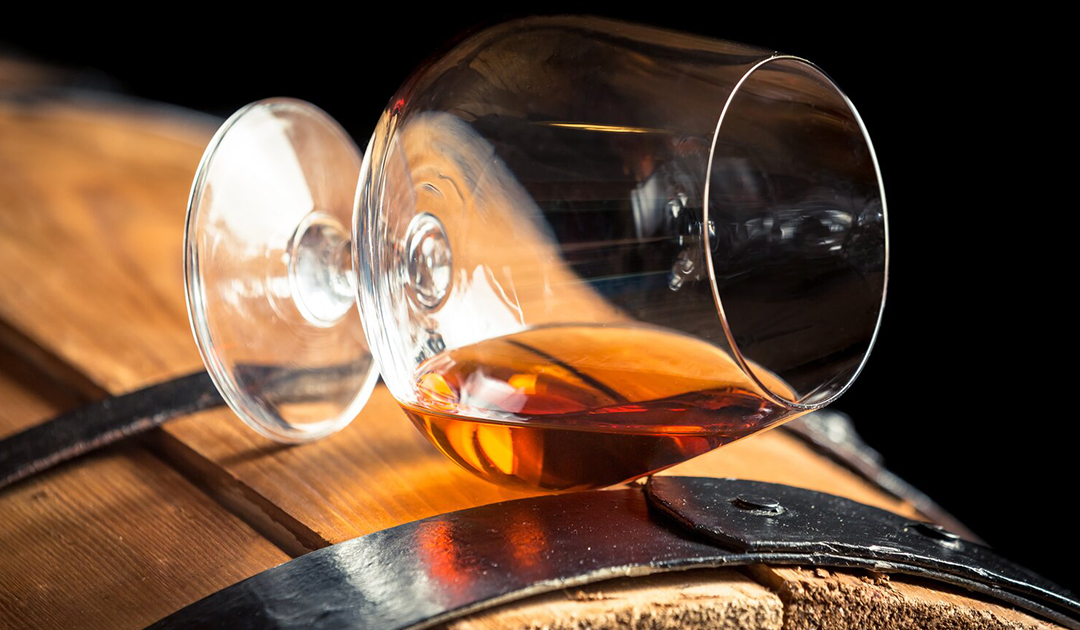One of the most well-known types of French brandy is Cognac. While it may sound esoteric, it’s widely distributed–and often inexpensive. But Cognac isn’t the only great French spirit out there. If you’re really looking to get into the wonderful world of French brandy, make sure you don’t deprive yourself of another goodie: Armagnac.
Cognac and Armagnac are both French brandies made from white wine grapes. The main difference between Cognac and Armagnac is also known as the golden rule of real estate: Location. Unsurprisingly, Cognac is made in Cognac and Armagnac is made in Armagnac, in the Gascony region. While the two carry similarities, they also have some differences.
First of all, what is brandy? Brandy in general means any kind of distilled Spirit, made from fermented fruit juice. The fruit in question is often grapes, but there are a number of Brandies based on apples, pears and other sweet fruits. And while apple-based Calvados from Normandy, Spanish Brandy from Jerez, Italian Grappa, Pisco from Peru and other regional varieties are very popular around the world, we’re going to focus on the French Wine Brandy brotherhood, that go by the names of Cognac and Armagnac.

If Cognac is Beyonce, Armagnac is Solange.
Although the production of Armagnac started about 200 years earlier than Cognac, it never achieved the same level of fame. Very much due to the fact that its home region didn’t have good river and sea connections to reach the English and Dutch merchants in the past like Cognac did.
Cognac typically only uses the Ugni Blanc (Trebbiano) grape, while Armagnac uses three additional grape varietals: Folle blanche, Colombard, and Baco Blanc.
The key technical difference between Armagnac and Cognac is that Cognac is distilled twice, whereas Armagnac is distilled only once. This means more time in the oak for Armagnac, the extra patience required rewards a brandy with more finesse and roundness. Cognac must be double distilled in a copper pot still. Armagnac is distilled in alembic continuous still (alembic armagnacais) with the exception of a few producers who double distill it in the same way as Cognac.
This difference in process greatly affects the end product. Here’s why. The more you distill a spirit, the more you strip it of congeners, “impurities”. While taking out impurities in a spirit can lead to less of a hangover, it also lifts a lot of its taste. That’s why vodka is more subtle in flavor than whiskey, because it usually has gone through much more extensive distillation (and filtration). Some might argue that for the same reason, Armagnac has a fulArmagnac is often distilled to be lower in alcohol than Cognac.
While Armagnac can be aged for a minimum of one year to reach the VS (Very Special) standard (the least stringent aging requirement), Cognac needs to be aged for at least two years. In fact, while you can technically have unaged Armagnac, there’s no such thing as unaged Cognac. When it comes to aging, Cognac typically sits in Limousin/Tronçais oak barrels, while Armagnac can be also be aged in Gascon oak barrels.
Ageing and classification legislation of Armagnac is overseen by the BNIA, the Bureau National Interprofessionnel de l’Armagnac and Cognac by the BNIC, Bureau National Interprofessionnel du Cognac.Although you will find single vintage Cognac and Armagnac, the principal methods of classification of Armagnac and Cognac are based on the number of years the spirit is aged in barrel.
In Cognac three star or VS must be aged for a minimum of 2 years in barrel, VSOP for 4 years and XO for a minimum of 6 years. After this you can get age statement and single vintage Cognacs.
Three star Armagnac, has to be aged for a minimum of 2 years barrel, VSOP for 5 years, XO (or Napoleon) for 6 years and Hors d’Age for a minimum of 10 years. There are also single vintage and age statement Armagnac, single vintage Armagnacs are more common than vintage Cognacs.
Enjoying Armagnac, Brandy or Cognac.
Appreciating the bouquet is the first critical step in the enjoyment of this most beguiling libation, but please don’t go sticking your nose right in the glass and inhaling deeply. All you’ll do is singe your nasal passages with powerful alcohol esters. Instead, hold the glass at chest level and let the delicate fragrances waft up. In a minute or so, your senses will be luxuriating in a cloud of vanilla, toffee, nougat, pepper, rose and chocolate. Now bring it a little closer, maybe to chin level, and you’ll begin to enjoy what these drinks are all about.
What’s next is a trick popular with Sommeliers, although other people think its just a waste of drink, stick a finger in the glass and then dab the liquid on the back of your hand – just as you would a perfume sample. Your body heat will cause the alcohol to evaporate, leaving behind only the essential aromas of the Armagnac. After about a minute, smell it up close. The Armagnac will no doubt remind you of dried fruits like apricots, prunes and figs, and you may also detect butterscotch, liquorice and flowers.
Bon chance!

